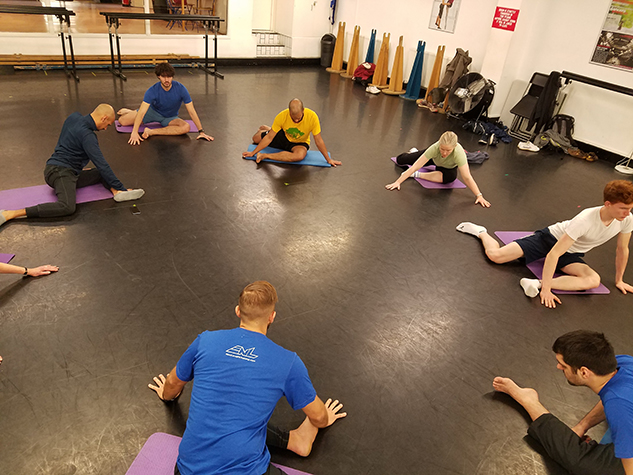Kinstretch Is the New Pilates: Because Joint Problems Start Earlier Than You Think
Photo below courtesy of Functional Range Seminars
Joint health is not just something the elderly need to worry about. Well, it is if you don’t pay attention to it earlier on.
As yogis and top athletes are quickly discovering, paying attention to your oft forgotten joint health vastly improves overall joint longevity and body function. Thankfully there’s a new exercise that has everyone from amateur yogis to even the world champion Chicago Cubs subscribing to it. Functional Range Conditioning and its derivative Kinstretch want to boost your joint health.
So why does this matter to you? (We’re assuming you’re not playing for the Chicago Cubs). Ever had problems doing a simple squat or rising from a sitting position? Sitting at your office desk or stationary in your car does wonders to your hip joints—but not in a good way. The adage of “if you don’t use it, you lose it” is especially meaningful to our joints. Those sitting positions restrict and don’t allow you to use your hips and their surrounding muscles and soft tissues to their optimal potential. Kinstretch does.
What is Kinstretch?

Photo courtesy of Functional Range Seminars
Put simply, Kinstretch is an exercise that focuses on body control, strength and flexibility. To the untrained eye, it looks like yoga and Pilates, but in fact it’s nothing like them. Instead of doing downward facing dog, Kinstretch encourages you to irradiate, isolate your joints (i.e., your shoulders, hips and ankles) and expand your pre-existing ranges of motion. Remember the example of not being able to squat properly? Kinstretch exercises can isolate your hips’ mobility to increase its range.
“When you look at Kinstretch with the naked eye, it might not look like you’re doing much, but you’re actually doing everything,” says Chris Campbell, a certified Kinstretch instructor and Functional Range Conditioning Mobility Specialist at Next Level Fit Training in Fort Lauderdale, Florida. “It’s one of the best examples of how to increase active flexibility.”
Active versus Passive Flexibility
“Mobility is a term that is misunderstood or misused,” Campbell says. He explains that mobility is defined as usable ranges of motion that target body control, strength and flexibility. Where yoga tends to improve flexibility, it’s a passive mobility act. If you’re lying on the ground using a strap to help stretch your leg, it’s passive. Same thing if you’re bending down and letting gravity help you stretch, that’s passive.
-

-

-

-

-

-

-

-

-

-

-

-

-

-

-

-

-

-

-

-

-

-

-

-

-

-

-

-

-

-

-

-

-

-

-

-

-

-

-

-









































